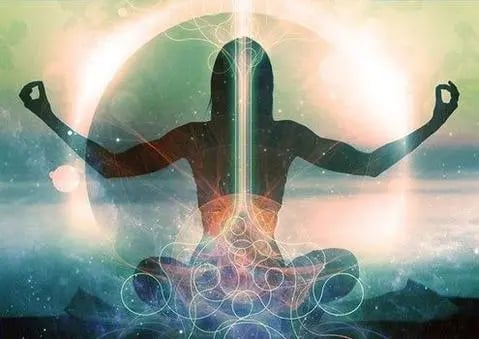Awakening the Kundalini Energy.
Kundalini energy begins its ascent from the coccyx, the base of our spinal cord, known as the base chakra or muladhara chakra. Our body contains six chakras, which are envisioned along the spinal cord that runs through the back and terminates just above the neck. The spinal cord concludes at the medulla oblongata, serving as the connection between the spinal nerves and the brain's nerves. As kundalini rises, it encounters obstacles in three specific areas referred to as brahma granthi, Vishnu granthi, and Rudra granthi.....Read More


Kundalini energy begins its ascent from the coccyx, the base of our spinal cord, known as the base chakra or muladhara chakra. Our body contains six chakras, which are envisioned along the spinal cord that runs through our back and terminates just above the neck. The spinal cord concludes at the medulla oblongata, serving as the link between the spinal nerves and the brain's nerves. As kundalini rises, it encounters obstacles in three specific areas referred to as brahma granthi, Vishnu granthi, and Rudra granthi, with "granthi" meaning knots. These blocks create resistance, complicating the ascent. To continue its journey, kundalini must penetrate these barriers. Upon reaching the crown of the head, it merges with Shiva, allowing us to experience bliss before returning to its origin at the perineum. The ascent of kundalini can be sensed through the sounds, pressure, and heat generated in the respective areas as it passes through each chakra. While chakras are not literally wheels, they represent clusters of nerves, muscles, and glands. Each chakra is associated with a specific color, represented by the acronym VIBGYOR: Violet, Indigo, Blue, Green, Yellow, Orange, and Red. These colors correspond to distinct qualities, and when kundalini activates a particular chakra, the qualities linked to that color become prominent within us. The kundalini travels up the spinal cord through two tiny nerves known as vajrini and citirini. The ascent from the base chakra to the higher chakras occurs via citirini, which is medically referred to as the posterior medial sulcus or central canal. This canal extends from the medulla oblongata to the sacral area, located between the hip bones. It is essential to consciously guide the kundalini through this central canal within the spinal cord.
There are two primary nadis that run alongside the spinal cord and intersect with one another: ida and pingala. The spinal cord itself is referred to as sushumna. However, the ascent of kundalini is not straightforward due to the gravitational forces at play. Even when it reaches the higher chakras, it often returns to the lower ones because of the earth's gravitational pull. This phenomenon is akin to throwing a ball into the sky; it falls back to the ground much quicker than it was propelled upward. Similarly, the descent of kundalini is significantly faster and easier than its ascent. To engage in kundalini meditation effectively, one must cultivate dedication, practice, concentration, willpower, and, most importantly, perseverance. The six chakras, which extend from the base of the spine, are muladhara, swadishtana, manipura, anahata, vishudhi, and ajna, each represented by the colors red, orange, yellow, green, blue, indigo, and violet, respectively. This sequence is the reverse of VIBGYOR. The red color symbolizes our attachments and desires, which are tied to illusion or maya, while violet represents the divine, where all earthly concerns are transcended. The other colors reflect qualities that exist between these two extremes. Additionally, there are two significant chakras: sahasrara, located at the crown of the head, and the back head chakra. These are not typically classified as chakras since they exist beyond human perception and are linked to the divine essence of the supreme order, particularly sahasrara, which encompasses all VIBGYOR colors. As kundalini ascends from one chakra to the next, our nature and perspective also transform. When it rises from muladhara, the earthly chakra, to sahasrara, the ultimate realm of divinity, we too become divine and experience profound bliss.
The primary obstacle to a man's divinity is the ego, which is completely eradicated when the kundalini ascends to the sahasrara. During normal breathing, we alternate between inhaling through the left or right nostril, with one nostril being more dominant at any given time. By mastering and regulating our breath, we can initiate the awakening of kundalini. Additionally, the cosmic energy that flows into our body through the sahasrara directly reaches the kundalini, rousing her from slumber. Therefore, three key elements contribute to the awakening of kundalini: our mind, the cosmic energy, and prana, or breath.
